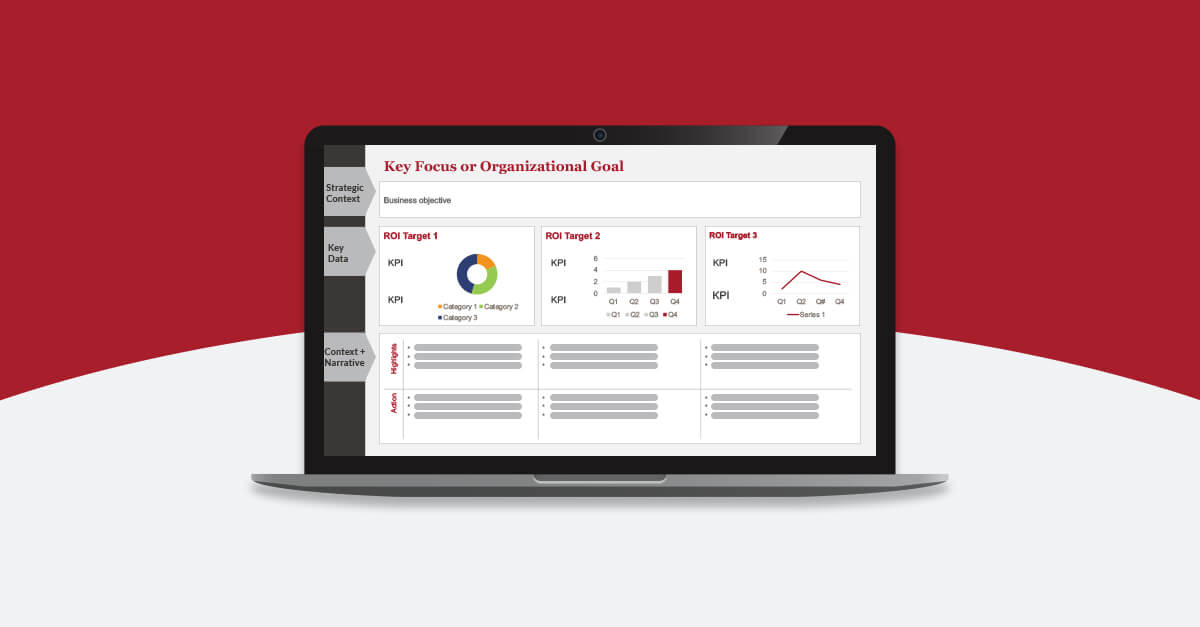Blog
Measure Communication Effectiveness With Metrics That Matter
|

Blog
Measure Communication Effectiveness With Metrics That Matter|

Organizations are drowning in data. The volume of information makes it difficult to know which metrics actually matter when measuring communication effectiveness. As a result, communication teams often spend significant time collecting data without knowing how to interpret its meaning or act on the insights. Measurement becomes tedious work with little return.
But data holds significant value. Effective measurement and reporting can help communicators assess their performance and articulate how they help advance strategic business goals. The key is to know where to start, what to measure and how to contextualize the information for leaders.
5 steps to measure communication effectiveness
Communication teams that use a strategic process to choose their communication KPIs can use these results to demonstrate their value. Beehive’s 5-step approach to building a measurement framework can help communicators identify the metrics that matter most to business leaders and ensure that strategies drive business outcomes.
1. Begin with a strategic focus
Data can get into the nitty-gritty very quickly. To choose effective measurement strategies that provide meaningful information to your audiences (i.e., executives), start with the big picture in mind.
Take a moment to reflect on the ultimate strategic focus area (or areas) of the work you are measuring before you begin identifying metrics: Are you hoping to improve financial business results? (Focus area: Organizational growth). Or, are you focusing on improving your organization’s culture and talent strategy? (Focus area: Culture & talent). Having a broader sense of a high-level aim will help you identify the right data and tell a compelling story to executives.
2. Outline priority objectives
Next, teams should identify which organizational objectives or business goals align and connect directly to the strategic focus area. For example, an organization may have objectives to increase employee engagement (culture & talent), increase market share (organizational growth), or increase customer retention rate (brand & reputation).
This step is often one that communication teams miss. Either the organization doesn’t have defined business goals or the connection between communication and the goals isn’t clear. (The next couple of steps help teams thread that connection.) Tying communication to business performance isn’t possible unless the team knows which objectives it’s trying to impact.
3. Align on return on investment (ROI) targets
Once the team has defined the priority objectives, it’s time to determine the outcomes (or ROI) that show progress toward those objectives. ROI targets are measurable, time-bound and specific, connecting directly to a particular objective.
Below are some examples of ROI targets and the organizational objectives they support:
- ROI target: Improve employee pulse survey participation by X% by a specific date → Objective: Increase employee engagement
- ROI target: Grow in market share by X% by a specific date → Objective: Increase market share
- ROI target: Increase repeat site visits by X% by a specific date → Objective: Increase customer retention rate
In some cases, organizations may have multiple ROI targets tied to each objective.
4. Select key performance indicators (KPI) measures
The next step is determining which data the communication team can gather to support these ROI targets. Communication KPIs are day-to-day activities that influence progress toward the ROI targets. In other words, this is the raw data that can measure communication effectiveness.
Communication KPI examples could include:
- KPI: Engagement with culture-related content on intranet → ROI target: Improve employee pulse survey participation by X% by a specific date → Objective: Increase employee engagement
- KPI: Share of voice vs. competitors → ROI target: Grow in market share by X% by a specific date → Objective: Increase market share
- KPI: # of return users to website → ROI target: Increase repeat site visits by X% by a specific date → Objective: Increase customer retention rate
This step is when we recommend teams evaluate whether the data they track today ladders up to their ROI targets and organizational objectives. If it doesn’t, it might be time to stop tracking and reporting that information and identify a different metric that does.
5. Share actionable insights
Choosing which communication KPIs to measure can be a big hurdle. But data alone can’t advance business goals; communicators must contextualize, share and act on it.
In this final step, teams should package their insights using metrics, charts, graphics and other forms of visual communication that illustrate performance over time. When sharing insights, teams can contextualize the data for leaders by comparing it against annual or industry benchmarks.
We recommend that communication teams collect and share data and insights quarterly and annually to ensure their metrics are strategically aligned and acted upon regularly. Frequent review of these insights helps teams quickly spot patterns, uncover trends and proactively act on insights. Teams can then continue to build on the effective strategies or course-correct where needed to maximize their impact and prove their value.
We live in a data-dense world. But it’s often difficult, time-consuming and costly for organizations to connect specific data points to business performance and insights.
Measuring communication effectiveness takes thoughtful planning and careful consideration of strategic objectives. A measurement framework like Beehive’s gives communication teams a reliable compass to ensure their measurement strategy is always heading in the right direction. The result? Clear, data-driven decisions that support business success and a compelling case for the value of communication in business.


